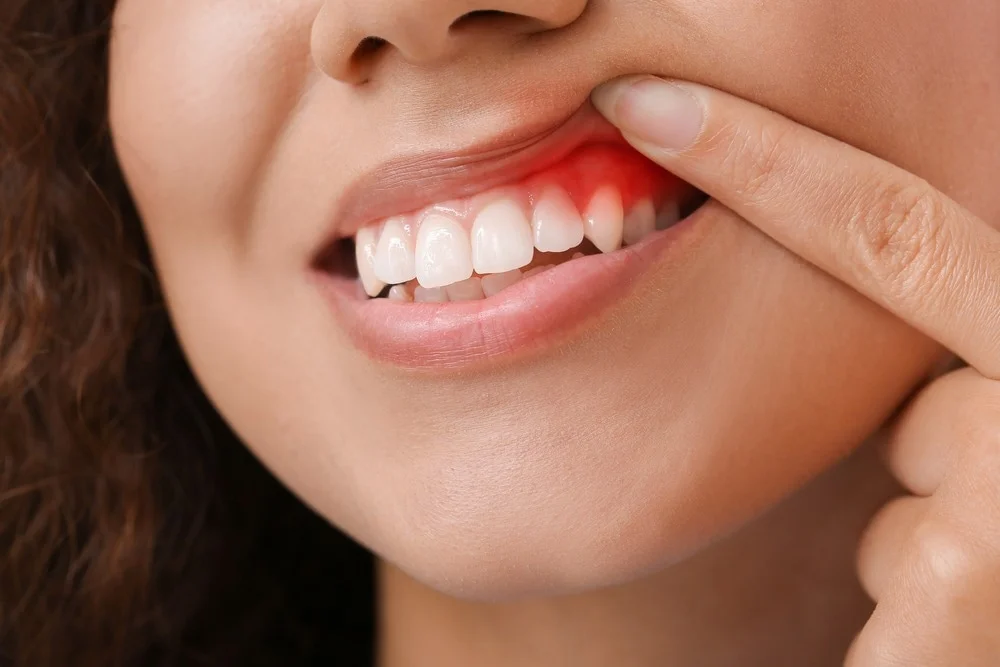Gingivitis is a common condition that affects the gums and is characterized by inflammation, redness, and bleeding. It is typically caused by a buildup of plaque and tartar on the teeth and gums, which can lead to infection and inflammation. If left untreated, gingivitis can progress to periodontitis, a more severe form of gum disease that can lead to tooth loss and other serious health problems.
Symptoms of gingivitis include:
Red, swollen, and tender gums: This is the most common symptom of gingivitis and is caused by inflammation and infection in the gums.
Bleeding gums: When you brush or floss your teeth, you may notice that your gums bleed. This is a sign that your gums are inflamed and that there is an infection present.
Bad breath: Gingivitis can cause bad breath, also known as halitosis, due to the buildup of bacteria in the mouth.
Receding gums: As the gums become inflamed, they may pull away from the teeth, exposing more of the tooth root.
Loose teeth: In advanced cases of gingivitis, the gums and bone supporting the teeth can become so damaged that the teeth may become loose.
Treatment for gingivitis:
Professional Cleaning: The first step in treating gingivitis is to visit a dentist or dental hygienist for a professional cleaning. They will remove any plaque and tartar buildup on the teeth and gums, which will help to reduce inflammation and prevent further infection.
Oral hygiene: Good oral hygiene is essential for preventing and treating gingivitis. This includes brushing your teeth twice a day with a fluoride toothpaste, flossing once a day, and using an antiseptic mouthwash.
Medications: Your dentist may prescribe antibiotics or anti-inflammatory medications to help reduce inflammation and fight infection.
Lifestyle Changes: Quitting smoking, avoiding excessive alcohol consumption, and eating a healthy diet can all help to improve the health of your gums.
Surgery: In some cases, surgery may be necessary to treat advanced cases of gingivitis. This can include gum grafts, which involve taking tissue from another part of the mouth and transplanting it onto the gums.
Preventing gingivitis:
Brush and floss regularly: Brushing your teeth twice a day and flossing once a day is essential for preventing gingivitis. This will help to remove plaque and tartar buildup on the teeth and gums.
Use an antiseptic mouthwash: Antiseptic mouthwash can help to kill bacteria and reduce inflammation in the gums.
Visit your dentist regularly: Regular dental check-ups and professional cleanings can help to prevent gingivitis by removing plaque and tartar buildup on the teeth and gums.
Quit smoking: Smoking can increase your risk of gingivitis and other oral health problems.
Eat a healthy diet: A diet rich in fruits, vegetables, and whole grains can help to improve the health of your gums and teeth.
In conclusion, gingivitis is a common condition that affects the gums and is characterized by inflammation, redness, and bleeding. It is typically caused by a buildup of plaque and tartar on the teeth and gums, which can lead to infection and inflammation.

 Home
Home Health
Health Diet & Nutrition
Diet & Nutrition Living Well
Living Well More
More












